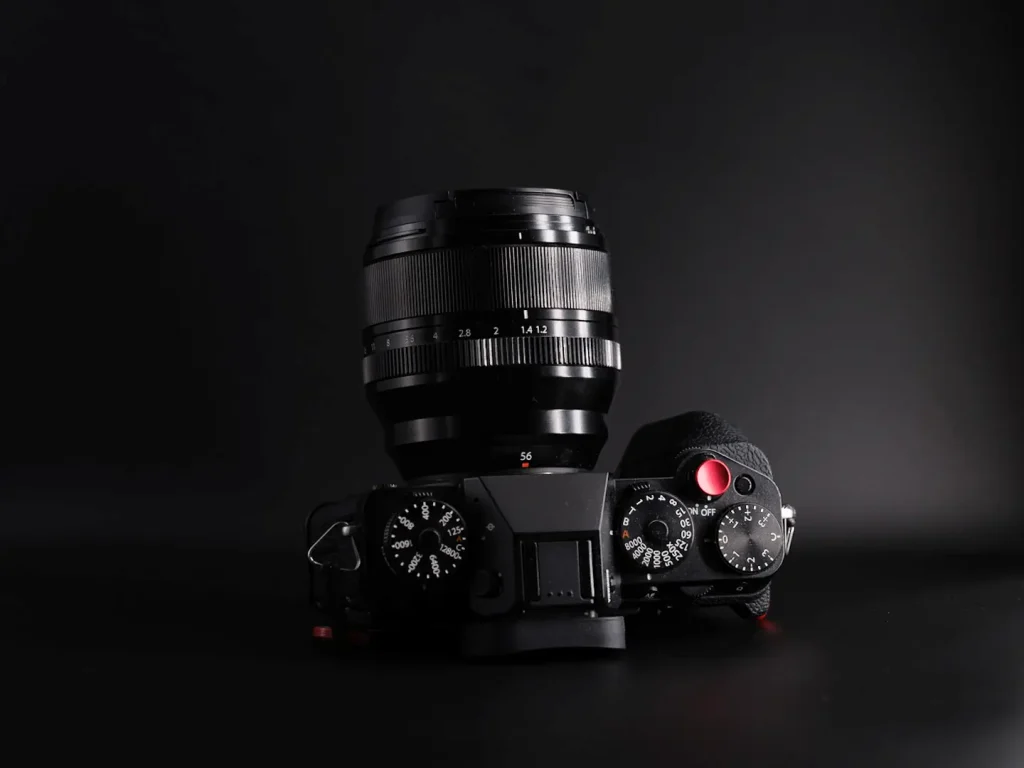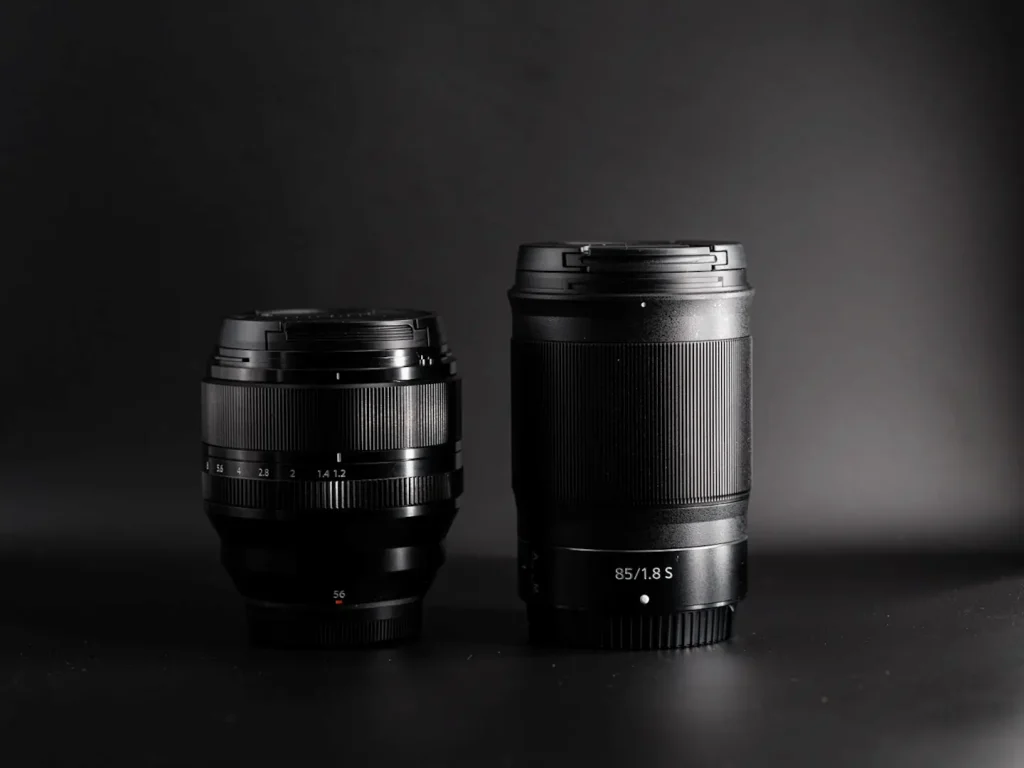Ask a lot of photographers about fast lenses and their eyes will light up. It’s the dream for many of us to own our brand’s premium prime — that exotic, wide-aperture lens that promises creamy backgrounds and the kind of subject separation you just can’t fake.
With bokeh and shallow depth of field more fashionable than ever, Fujifilm’s classic 56 mm f/1.2 has always been the go-to portrait lens for X-Series shooters. I owned the original 56 mm f/1.2 for a long time and liked the image quality, but its autofocus was clunky and it wasn’t weather-sealed — two things that often frustrated me.
Jump to:
Fuji has addressed both with the new XF 56 mm f/1.2 R WR, and because 56 mm is my preferred focal length for portraits and detail shots, I picked one up alongside my X-T5 a couple of years ago. This review comes from two years of real-world use, mostly here in the Philippines, photographing family and travel scenes in a variety of light and weather.
But is the XF 56 mm f/1.2 R WR really worth paying the premium for that ultra-fast f/1.2 aperture?
This article contains affiliate links. If you purchase through them, I may earn a small commission at no extra cost to you. Thank you for supporting the site.
| Focal length | 56 mm (≈ 85 mm full-frame equivalent) |
|---|---|
| Angle of view | 28.5° |
| Optical construction | 13 elements in 8 groups (including 2 aspherical and 1 ED element) |
| Maximum aperture | f/1.2 |
| Minimum aperture | f/16 |
| Diaphragm | 11 rounded blades (1/3 EV steps) |
| Minimum focus distance | 0.50 m |
| Maximum magnification | 0.14× (approx.) |
| Filter thread | 67 mm |
| Dimensions (Ø × L) | 79.4 mm × 76 mm |
| Weight | Approx. 445 g |
| Weather-resistance | Yes — WR (weather-sealed) |
TL;DR: The Fujifilm XF 56mm f/1.2 R WR is a big step up from the original — sharper wide open, smoother bokeh, better coatings and weather sealing. Autofocus is improved but still not as fast as Fuji’s linear-motor primes. If portraits are central to your photography, it’s worth every penny; if you only shoot this focal length occasionally, the cheaper 50mm f/2 or even the original 56mm may make more sense.
Build Quality & Handling

There are no surprises here — the XF 56 mm f/1.2 R WR is built to the same high standard as Fuji’s other premium primes like the 23 mm and 33 mm f/1.4 WR. Compared to those two it’s definitely heavier and a little bulkier, but it still balances nicely on the X-T5. I actually like Fuji’s design choice here: the lens is shorter and fatter rather than long and skinny, which keeps the camera from feeling front-heavy and (to my eye) looks better than something like Nikon’s 85 mm f/1.8 Z.
The metal barrel feels solid and confidence-inspiring in the hand. The aperture ring offers well-defined ⅓-stop clicks with just the right resistance — no sloppy play. One of my must-haves when paying for a premium prime is weather sealing, and Fuji didn’t disappoint: there’s a gasket at the mount, multiple internal sealing points, and a fluorine coating on the front element to help shed moisture. In practice I haven’t used this lens in truly bad weather as much as my 23 mm and 33 mm f/1.4, but I’ve had no hesitation shooting in light drizzle here in the Philippines. (That said, being a portrait lens, my usual subjects — wife and daughters — didn’t jump at the chance to test it in a monsoon.)
The focus ring is smooth, but this isn’t really a lens I’d choose for manual focus. At f/1.2 the depth of field is razor thin and subject movement makes precision tricky; the manual focus response also feels a little jumpy rather than perfectly linear. Fuji supplies a fairly large lens hood, but overall the package is still reasonable in size. Sitting here next to my Nikon Z8 + 50 mm f/1.8 Z, the 56 mm is actually slightly shorter and about the same diameter — so it’s not some hulking monster.

The newer 67 mm filter thread is a touch bigger than the original 56’s 62 mm, but it hasn’t mattered to me in real-world use. I’ve mostly stopped adding filters to my primes anyway. All told, while this lens is heavier than Fuji’s other fast WR primes, it handles well and feels like a premium tool — solid, balanced, and confidence-inspiring on the X-T5.
Image Quality

The original XF 56 mm f/1.2 was never a bad performer, but the new WR version is clearly sharper wide open — both in the centre and right out to the edges (not that corners matter much at f/1.2). On the X-T5’s 40 MP sensor it’s already bitingly sharp at f/1.2, and stopping down to f/2–f/4 only adds a touch more crispness. The older lens needed to be at least at f/2 before it felt this sharp; once both are stopped down past f/2 the gap narrows.
Fuji also cut the minimum focus distance to 50 cm (vs 70 cm before), which lets you get closer for tighter portraits and more dramatic background blur. Combined with the new 11-blade diaphragm, the bokeh is smoother and creamier than the old lens — the previous 9-blade design sometimes gave less perfect bokeh balls.


Optical flaws are much better controlled too. The original 56 was prone to purple/green fringing in high-contrast scenes and could flare badly if light hit the front element at the wrong angle. The WR version shows almost no fringing and handles flare far better, helped by Fuji’s updated coatings. Contrast also feels a little higher, giving images more punch and pop straight out of camera.
Overall, while the first-generation 56 mm was a solid portrait lens, this update brings a stack of refinements. The standout gains for me are razor-sharp performance wide open and the smoother, rounder bokeh — together they make the WR version feel like a true modern premium prime rather than a holdover from Fuji’s early X-mount days.
Autofocus & Usability

Fuji has definitely improved autofocus on the XF 56 mm f/1.2 R WR, but not to the same level as the newer 23 mm f/1.4 WR or 33 mm f/1.4 WR. This lens doesn’t use Fuji’s fastest linear AF motor, and you can feel it: focus is quicker and more confident than the old 56 mm, but it’s still not snappy. You’ll sometimes notice a two-step movement — a quick lock, then a small refinement — and there’s still a hint of the old-style focus motor sound rather than the silent glide of the linear designs. In my comparison of the Fuji 56mm 1.2 vs 50mm f2 I found the 50mm f2 was faster to focus.
The big step forward is accuracy. My hit rate with people (including my two constantly moving daughters) is now around 75% wide open, which is a noticeable improvement over the original. I’ve also switched my X-T5’s AF-C priority to “Focus”, so the camera won’t fire until focus is confirmed. That adds a tiny pause before the shutter fires, but at f/1.2 I’d rather have a sharp keeper than a stream of almost-but-not-quite in-focus frames.
If you want to set up your Fuji X-T5 quickly in exactly the same way that I do, then you can download my free settings file here. You can then simply load it on to your X-T5 and start shooting with the best AF settings, custom functions and Film recipes straight away.
In low light the lens is usable but not lightning fast; it can hesitate a touch compared with Fuji’s linear-motor primes, but it rarely hunts or fails outright. Eye and face detection on the X-T5 work well — just don’t expect the same tracking responsiveness you’d get with the 23 mm f/1.4 WR.
Overall, autofocus is good enough for real-world portraits and family use and a clear step up from the old 56 mm, especially in accuracy. Still, I can’t help wishing Fuji had given this lens a linear motor — it would have made an already excellent portrait prime almost perfect.
Do You Really Need f/1.2?

So with all that said — is the XF 56 mm f/1.2 R WR worth paying the premium over cheaper alternatives (See my article on the best portrait lenses for Fujifilm)? I’m not going to bore you with every possible shooting scenario because I could reel off plenty. It really boils down to one simple question:
Are portraits and shots at this focal length a major part of your photography?
If they are, then yes — without doubt the 56 mm f/1.2 WR is worth every dollar if you’re a Fujifilm shooter. Between the bright aperture, fantastic rendering and pro-level build quality, this is a lens you can invest in and create images that will stand out for years. For wedding photographers or anyone selling prints and portrait packages, the look this lens delivers is the kind that wows clients and wins repeat business. If you simply love beautiful image quality for your own work, you won’t be disappointed — just be aware it’s not the fastest-focusing lens, so don’t expect to track fast-moving subjects as confidently as with Fuji’s other modern primes.
If you’re planning to buy the Fujifilm XF 56mm f/1.2 R WR, here’s a link to check the latest pricing:
Purchasing through this link costs you nothing extra and helps support the site.
If you’re a more general shooter — you usually shoot wider or standard focal lengths and only occasionally dip into short telephoto — you may be better off saving money with the original 56 mm f/1.2 and living with its quirks. If you don’t mind extra weight, the Viltrox 75 mm f/1.2 is also a compelling lower-cost option with lovely rendering. And if you just want this focal length covered but won’t use it heavily, the Fuji 50 mm f/2 WR is small, fast to focus and much cheaper.
Who should buy the XF 56mm f/1.2 R WR?
- Buy it if: portraits/weddings are a big part of your work and you want the sharpest, most beautiful rendering Fuji offers at this focal length.
- Skip it if: you only occasionally shoot portraits — the 50mm f/2 or original 56mm are better value.
For me personally, while it’s not one of my most used lenses, every time I shoot with it, I’m glad that I have it in my bag. The images I get from it are worth every Dollar it cost me and to get anything substantially better on Full frame would cost a lot more than the Fuji 56mm 1.2WR lens.
Frequently Asked Questions
Is the Fujifilm XF 56mm f/1.2 R WR worth it?
Yes, if portraits or weddings are a major part of your photography. It’s sharper wide open than the original, has smoother bokeh, weather sealing and better coatings. Autofocus is improved but still not as fast as Fuji’s linear-motor lenses.
Does the Fujifilm XF 56mm f/1.2 R WR have weather sealing?
Yes. It’s weather-resistant with multiple sealing points, a gasket at the mount, and a fluorine-coated front element to repel moisture and dust.
How does the autofocus compare to the original?
The WR version focuses faster and with better accuracy than the original 56mm f/1.2, with fewer focus hunts and a higher hit rate. However, it still uses an older motor and isn’t as quick or silent as Fuji’s newest linear-motor primes like the 23mm and 33mm f/1.4 WR.
What are the alternatives to the Fujifilm XF 56mm f/1.2 R WR?
Alternatives include the original XF 56mm f/1.2 (cheaper but slower AF and no weather sealing), the compact XF 50mm f/2 WR (lighter and faster focusing with less subject separation), and the Viltrox 75mm f/1.2 (heavier but excellent rendering at a lower price).

